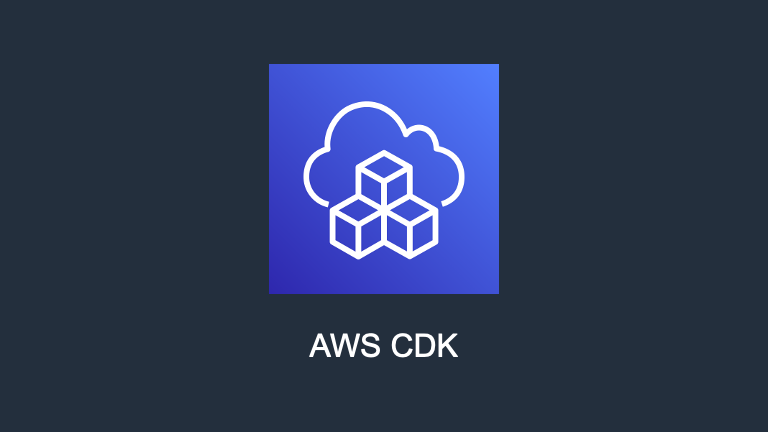はじめに
cdkでカスタムリソースを実装する方法を調べて試してみたのでメモする。
カスタムリソースとは?
AWS CloudFormation のリソースタイプとして使用できないリソースを含める必要がある場合に使用できる。
テンプレートにカスタムのプロビジョニングロジックを記述してリソースを定義できる。
CDKで使える4つのカスタムリソースプロバイダ
カスタムリソースプロバイダ自体の説明は、custom resource provider 参照。
4つのプロバイダについてはcdkドキュメントから引用。
今回はcustom-resources.Provider を試してので、この内容を記載する。
| Provider | Compute Type | Error Handling | Submit to CloudFormation | Max Timeout | Language | Footprint |
|---|---|---|---|---|---|---|
| sns.Topic | Self-managed | Manual | Manual | Unlimited | Any | Depends |
| lambda.Function | AWS Lambda | Manual | Manual | 15min | Any | Small |
| core.CustomResourceProvider | AWS Lambda | Auto | Auto | 15min | Node.js | Small |
| custom-resources.Provider | AWS Lambda | Auto | Auto | Unlimited Async | Any | Large |
cdk(python)でカスタムリソースを定義してみる
AWS CDK Custom Resources を参考に実装してみる。
ミニフレーム的な立ち位置だと理解。
The
@aws-cdk/custom-resources.Providerconstruct is a “mini-framework” for implementing providers for AWS CloudFormation custom resources. The framework offers a high-level API which makes it easier to implement robust and powerful custom resources.
Provider Framework ExamplesのS3File の例をpythonで(色々省きながら)実装した。
概要としては、対象のs3バケットにオブジェクトをputするカスタムリソースである。
以下、実装したコード。
- cdk_custom_resource_1_stack.py: カスタムリソースを含むスタック
- app.py: カスタムのリソースをデプロイするlambdaコード
# cdk_custom_resource_1_stack.py
from aws_cdk import (
Stack,
CustomResource,
aws_lambda as lambda_,
aws_iam as iam,
aws_s3 as s3,
)
from constructs import Construct
from aws_cdk.custom_resources import Provider
class CdkCustomResource1Stack(Stack):
def __init__(self, scope: Construct, construct_id: str, **kwargs) -> None:
super().__init__(scope, construct_id, **kwargs)
s3_bucket = s3.Bucket(self, 's3-bucket-cr1')
provider = Provider(
self, 's3file-provider',
on_event_handler=lambda_.Function(
self, 's3file-on-evnet',
code=lambda_.Code.from_asset('lambda_function'),
runtime=lambda_.Runtime.PYTHON_3_9,
handler='app.on_evnet',
initial_policy=[
iam.PolicyStatement(
resources=['*'],
actions=[
's3:GetObject*',
's3:GetBucket*',
's3:List*',
's3:DeleteObject*',
's3:PutObject*',
's3:Abort*',
]
)
]
) # type: ignore
)
custom_resource = CustomResource(
self, 'Resource',
service_token=provider.service_token,
resource_type='Custom::S3File',
properties={
'BucketName': s3_bucket.bucket_name,
'ObjectKey': 'demo.txt',
'Contents': 'hell!\\nworld! ver.5',
'PublicRead': False,
}
)
# custom_resource.node.add_dependency(s3_bucket)
self.object_key = custom_resource.get_att_string('ObjectKey')
self.url = custom_resource.get_att_string('URL')
self.object_key = custom_resource.get_att_string('ETag')
# app.py
import boto3
# s3 = boto3.resource('s3')
s3 = boto3.client('s3')
def on_evnet(event, context):
print(event)
request_type = event['RequestType']
if request_type == 'Create':
elif request_type == 'Update':
return put_object(event)
elif request_type == 'Delete':
return delete_object(event)
def put_object(event):
bucket_name = event['ResourceProperties']['BucketName']
if not (bucket_name):
raise Exception('"BucketName" is required')
contents = event['ResourceProperties']['Contents']
if not (contents):
raise Exception('"Contents" is required')
object_key = event['ResourceProperties']['ObjectKey']
if not (object_key):
raise Exception('"ObjectKey" is required')
public_read = convert_str_bool(event['ResourceProperties']['PublicRead'])
print(f'public read = {public_read}')
print(f'writing s3://{bucket_name}/{object_key}')
response = s3.put_object(
Bucket=bucket_name,
Key=object_key,
Body=contents,
ACL='public-read' if public_read else 'private',
)
return {
'PhysicalResourceId': object_key,
'Data': {
'ObjectKey': object_key,
'ETag': response['ETag'],
'URL': f'https://{bucket_name}.s3.amazonaws.com/{object_key}',
}
}
def delete_object(event):
bucket_name = event['ResourceProperties']['BucketName']
if not (bucket_name):
raise Exception('"BucketName" is required')
object_key = event['PhysicalResourceId']
if not (object_key):
raise Exception('PhysicalResourceId expected for DELETE events')
s3.delete_object(
Bucket=bucket_name,
Key=object_key,
)
# CustomResourceのpropertiesに定義したbool値は文字列としてlambdaで取得できるので変換する
def convert_str_bool(str_bool_value):
if str_bool_value == 'true':
return True
elif str_bool_value == 'false':
return False
else:
raise Exception('str bool value not expected')
補足・所感
CustomResourceとProviderのimport元が異なり、適切に実装するのに少し苦戦- 抽象化されているので、あまり深い理解ができていない
- cfnで定義する場合、lambdaがインラインかどうかによってレスポンス方法が異なるはず
- 今回の実装だと
Updateのときにオブジェクトが作成され、スタックを削除したときにオブジェクトが削除されることを確認 - cdkで生成したcfnテンプレートを確認すると、理解が捗るかもしれない
終わりに
class AwsCustomResource (construct) などもあるので、暇なときに触ってみたい。
自前でlambdaを実装せずに、特定のapiをコールするだけのカスタムリソースならば、容易に実装できそう。
AWS CDK Conference Japan 2022 のチャプター「1805 – 1835 AWS Outposts 上のリソースを CDK する 福田優真(NTT Communications イノベーションセンター)」でも簡単に紹介されているので、おすすめです。
あと、分かりやすい記事をはっておきます。
- AWS CDKとProvider Frameworkを使うと簡単にAWS CloudFormation カスタムリソースが実装できました
- 今回と類似するもの
- AWS CDK(Cloud Development Kit)を使用したカスタムリソースの利用
- cdkのcfnコンストラクタで実装するパターン

